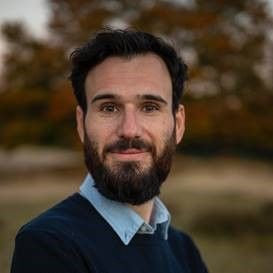
Stem cell biology
Introduction
Gerald de Haan has focused his entire scientific career on the identification of molecular mechanisms that control selfrenewal of hematopoietic stem cells. His early scientific contributions include papers in which the aging hematopoietic stem cell phenotype was described for the first time. He was the first to use the power of complex mouse genetics to identify genetic loci that regulate lifespan in mice and discover that these same loci were also controlling stem cell turnover rates. His lab was the first to use expression quantitative traits to search for loci that regulate stem cell-specific transcriptomes.
His lab was also one of the first to clonally study the behavior of single young and aged stem cells. His lab has used multiple genome-wide approaches to search for HSCs regulatory genes. This resulted in the identification of the Polycomb group proteins Ezh2 and microRNA125a, and led to functional studies in which these genes were shown to crucially regulate HSC selfrenewal and their leukemic derailment. The identification of the polycomb group gene Ezh2 spurred further efforts in establishing the role of the epigenetic machinery for HSC functioning, and identified Cbx7 as a key stem cell gene. These studies showed the importance of epigenetic modifications in hematopoietic stem cell selfrenewal. Only recently it has become apparent that a significant number of mutations in (elderly) patients with myelodysplastic syndromes and leukemia occur in epigenetic genes, and appear to confer a proliferative advantage to stem cells. His lab also developed technology to assess the fate of single (young and aged) HSCs, using either single cell transplants, or barcoding single HSCs and reading out clonal behavior using next generation sequencing approaches. His most recent studies have identified multiple novel HSC cell surface receptors that are specifically or preferentially expressed by aged HSCs, and current efforts in his lab aim to resolve the biological relevance of these novel HSC aging genes.
Research lines
1. Identification of molecular mechanisms that cause hematopoietic stem cell dysfunction.
2. The role of epigenetic modifiers in normal and leukemic stem cell selfrenewal.
3. In vitro derivation and expansion of hematopoietic stem cells
Funding
2018-2022: Principal Investigator Landsteiner Foundation for Blood Transfusion Research grant: "Dissecting the role of Neogenin; a novel receptor required for hematopoietic stem cell proliferation and engraftment". (LSBR 1703: €440,000).
2018-2022: ARCH; Age-related changes in hematopoiesis. Marie Curie Innovative Training Network EUH2020 Contract number 813091 ((€265,619).
2019-2023: Principal Investigator Dutch Cancer Society grant 12621: Characterization and targeting CBX7 regulated self-renewal pathways in leukemia ("(€615,445).
2021-2027: ZonMW Program Grant “Pluripotent Stem cells for Inherited Diseases and Embryonic Research (PSIDER)” Using iPSCs to unravel hereditary anemias: from fundamental knowledge towards novel therapies TRACER. (total budget €4000,000, budget GdH €588,000).
2021-2027: ZonMW Program Grant “Pluripotent Stem cells for Inherited Diseases and Embryonic Research (PSIDER)” GREAT: 3D Gastruloid cultures to model normal and pathogenic human development. Total budget (total budget €3500,000, budget GdH €704,000).
2021-2024: Principal Investigator NWO Klein Identification and functional characrerizationof hematopoietic stem cell aging genes (€348,000).




